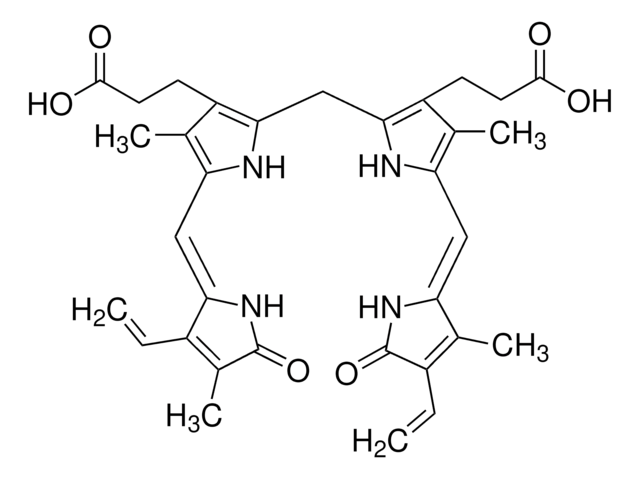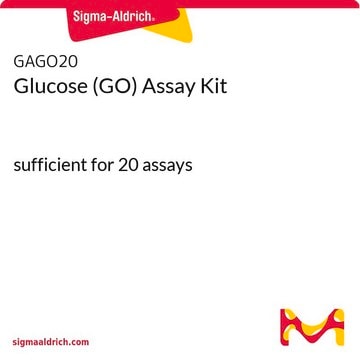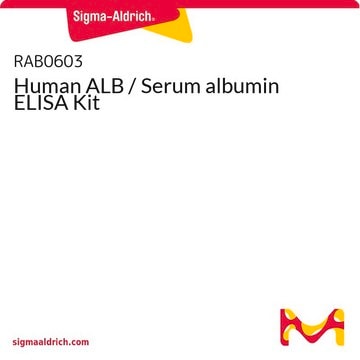All three kits have been used with mouse samples.
MAK126
Bilirubin Assay Kit
sufficient for 180 colorimetric tests
Synonyme(s) :
Hematoidin Assay Kit
About This Item
Produits recommandés
Utilisation
sufficient for 180 colorimetric tests
Méthode de détection
colorimetric
Maladie(s) pertinente(s)
hematological disorder; gastrointestinal diseases
Température de stockage
2-8°C
Description générale
Application
Caractéristiques et avantages
Adéquation
Principe
Code de la classe de stockage
12 - Non Combustible Liquids
Point d'éclair (°F)
Not applicable
Point d'éclair (°C)
Not applicable
Faites votre choix parmi les versions les plus récentes :
Certificats d'analyse (COA)
Vous ne trouvez pas la bonne version ?
Si vous avez besoin d'une version particulière, vous pouvez rechercher un certificat spécifique par le numéro de lot.
Déjà en possession de ce produit ?
Retrouvez la documentation relative aux produits que vous avez récemment achetés dans la Bibliothèque de documents.
Les clients ont également consulté
-
Can you please confirm me if these assays works with mouse samples?
1 answer-
Helpful?
-
-
What is a typical absorbance range for the 5 mg/dL standard in the MAK126 Bilirubin Assay Kit?
1 answer-
The OD that represents 5mg/dL bilirubin was determined to be 0.52-0.56 during the development of the kit.
Helpful?
-
-
Does this kit work with urine samples?
1 answer-
Kit MAK126 has not been tested on urine samples, so it is not something that can be guaranteed, but it is likely that urine would be okay as long as the concentration falls within the detection range of the kit. Bilirubin does not typically contain urine, so it may not exhibit a response from the kit unless the urine in question comes from a subject with a certain liver condition.
Helpful?
-
-
Can I use the Bilirubin Assay Kit (MK126) to do Bilirubin Assay for mouse?
1 answer-
This Billirubin Assay is not species specific. It has not been tested specifically on mouse serum, however there is no reason to suspect that this kit would not be suitable. Please see the links below to review publications utilizing this product with mouse serum:
https://doi.org/10.3389/fphar.2018.00410
https://doi.org/10.1152/ajpheart.00882.2014
https://doi.org/10.1002/path.5685Helpful?
-
-
Hola. Deseo medir bilirrubina total en una colección de sueros que se han mantenido congelados a -70ºC varios meses. Necesitaría saber si su kit es recomendable para estas muestras y la cantidad mínima de suero (humano) que se puede usar por reacción. Gcs
1 answer-
Measurement of Total and Direct Bilirubin requires a total of 150 microliters of sample (50 microliters each for Total, Direct, and Sample Blank). Serum (frozen or fresh) is a suitable sample for use with the kit.
https://www.sigmaaldrich.com/deepweb/assets/sigmaaldrich/product/documents/254/564/mak126bul.pdf
Helpful?
-
Active Filters
Notre équipe de scientifiques dispose d'une expérience dans tous les secteurs de la recherche, notamment en sciences de la vie, science des matériaux, synthèse chimique, chromatographie, analyse et dans de nombreux autres domaines..
Contacter notre Service technique





